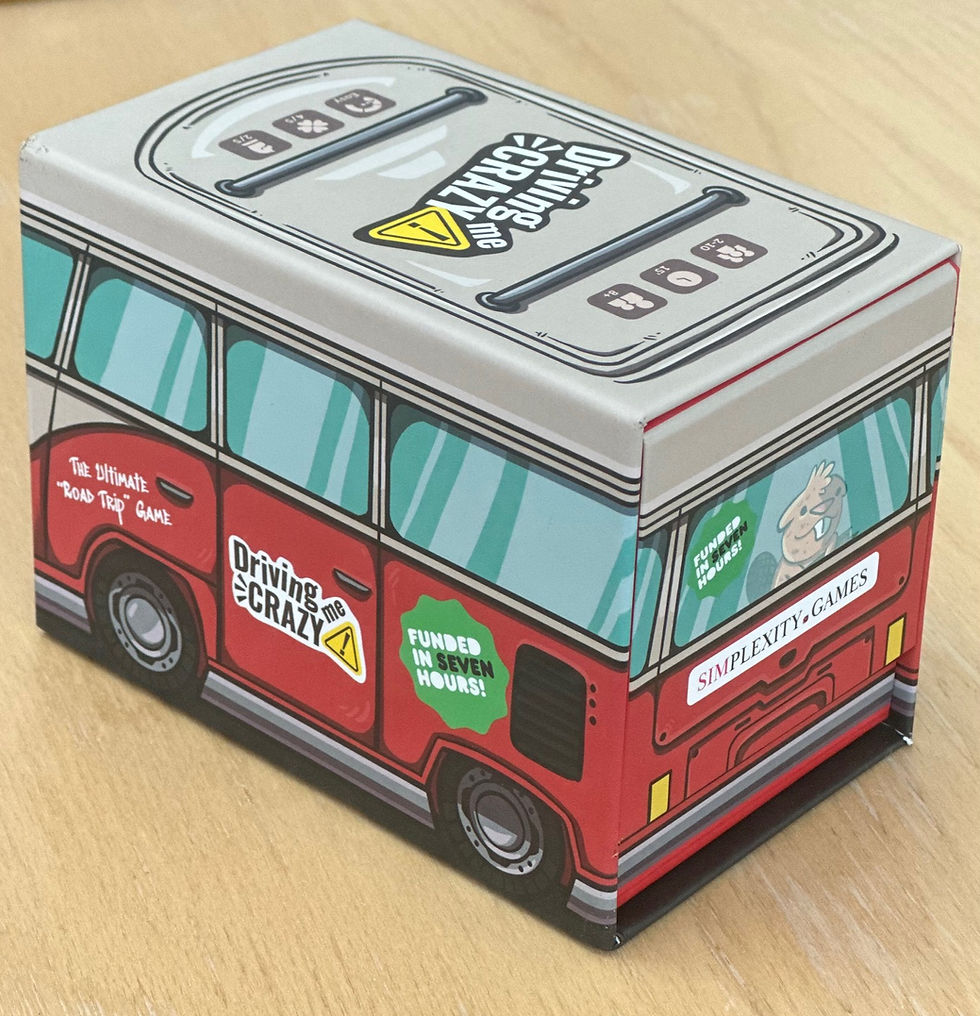Toko Island
- Board's Eye View

- Aug 14, 2023
- 3 min read
We've featured several memory games on Board's Eye View over the years. Often they are simple games for young children; variants on the traditional 'picking up doubles' games that children have played over many decades. Helvetiq's Toko Island is a little different. For starters, it's a fully cooperative game for up to four players, but equally playable as a solitaire. Instead of players competing with each other, they are competing against a game 'timer', in that you have to use tool tokens to find matches for 10 treasure cards before you run out of tools. And what's more you can set the level of difficulty and even play as a campaign game, collecting trophy cards in a trophy booklet.

Designed by Marie Fort and Wilfried Frost, and with art by Sandie Senac-Retaud, the premise of Toko Island is that players are archaeological explorers searching for artifacts. The island is the multi-level playing board. It's divided into areas delineated as sand, jungle and rocks. There are three different size of face-down tokens placed out randomly in the various indented spots on the island. There's also a boat-shaped board on which you place out 16 tool tokens, again randomised. Each tool corresponds to a specific terrain type: rake for sand, shovel for jungle and pickaxe for rock, and the tool's position on the boat indicates whether it lets you take 1, 2 or 3 searches when you use the tool. Players have a pile of 10 artefacts, customised according to the difficulty level you set, and they have to find all 10, in the order in which the cards are revealed, in order to collectively win. Run out of tools before you find all 10 artefacts and you lose the game.
On your turn, you choose a tool and make the indicated number of searches in the corresponding terrain by turning over face-down tokens. If you have two or more searches and you have turned over the token on top of another, you can continue to 'dig' at the same spot and turn over the token below. However, if you fail to find the artifact for which you are searching, then all tokens are turned face down again.
It sounds easy enough but it's decidedly harder than those memory games where you turn over cards that are neatly laid out in rows. Because the tokens are stacked up to three deep, Toko Island players are having to remember positions in three dimensions rather than the more usual two. That means this is a memory game that adults may find as challenging as young children: an ideal choice then as a family game.
The fact that you can start off with a straightforward 'mission' in easy mode and step up both the level of difficulty and the complexity of the mission is a big plus; adding hugely to Toko Island's replayability. For example, play the 'Darwin' mission and you can choose to keep searching for more of the same artifact rather than move on to the next card. That can be a push-your-luck option: it offers the prospect of achieving a higher collective score but at the expense of increasing the risk of overall failure.
For each 'mission' players are set a target to beat which will qualify them to collect a trophy to place in your trophy booklet, giving players the chance to unlock special action tokens to be used next time you play (presumably at an increased level of difficulty). It's a simple but effective design, giving players valuable positive reinforcement for their wins that children find especially appealing. And we liked the fact too that Helvetiq have eschewed stickers: the trophies are cards that slot into the trophy booklet.




